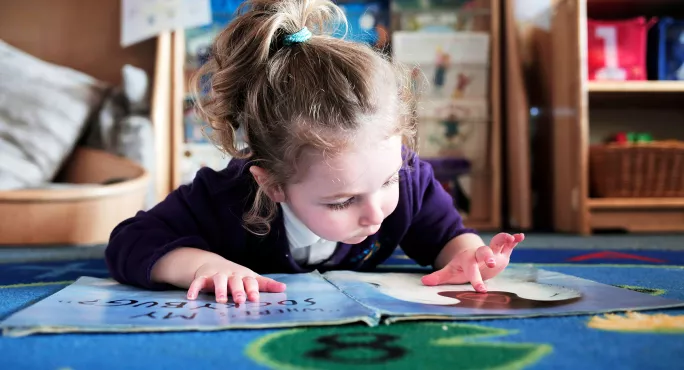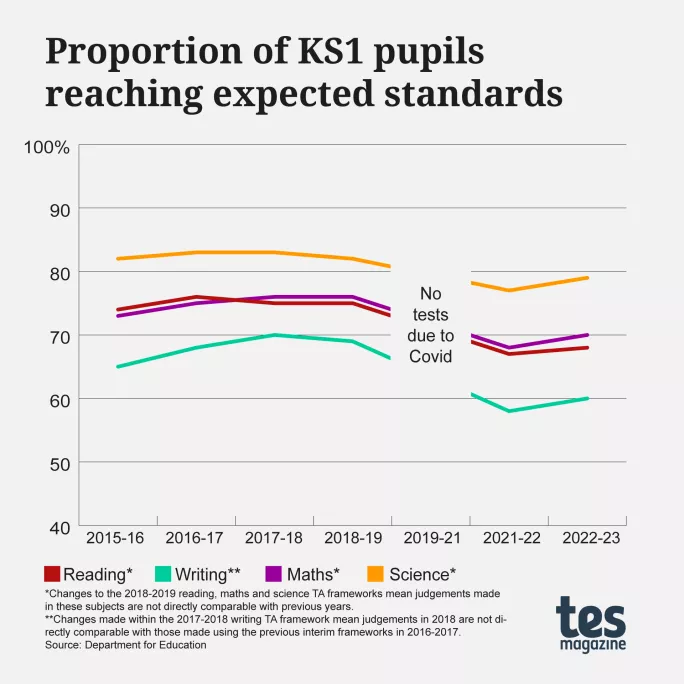The proportion of pupils reaching the expected standard in reading, writing, maths and science by the end of key stage 1 has risen year-on-year but remains far below pre-pandemic levels, government data has revealed.
New statistics, published today by the Department for Education, show a 1 percentage point increase in reading compared with 2022, with just 68 per cent reaching the expected standard in 2023 against 75 per cent in 2019.
Last year’s KS1 Sats results were the first to be published since 2019 because of the Covid pandemic and showed that the proportion of pupils reaching the expected standard in reading, writing, maths and science by the end of KS1 had plummeted.
In 2023, the proportion of pupils reaching the expected standard in writing rose by just two percentage points to 60 per cent - up from 58 per cent in 2022 and still far below the 69 per cent reaching the standard in 2019.
And in maths, 70 per cent of pupils achieved the expected standard, up from 68 per cent in 2022, but still below 76 per cent in 2019.
Nearly eight in ten (79 per cent) of pupils achieved the expected standard in science in 2023, up from 77 per cent in 2022, but still falling short of the 82 per cent who achieved the level in 2019.
This will be the last set of end-of-KS1 attainment results to be published, as the tests became non-statutory from the current academic year.
Disadvantage gap narrows slightly
In the writing teacher assessment, just 44 per cent of disadvantaged pupils reached the expected standard, up from 41 per cent in 2022, but still far below the 55 per cent who achieved the standard in 2019.
And in reading, 54 per cent of disadvantaged pupils achieved the expected standard, up from just over half (51 per cent) last year and below the 2019 figure of 62 per cent.
Maths saw the biggest improvement year-on-year with 56 per cent of pupils known to be disadvantaged achieving the expected standard, increasing from 52 per cent in 2022, but still below the 62 per cent who achieved this level in 2019.
‘Harmful’ school closures
MPs warned earlier this year that the prospects of a “generation of children” could be damaged by the impact of the Covid-19 pandemic unless the government takes faster and more effective action.
Similar calls were made by former Children’s Commissioner Anne Longfield, who told the Covid inquiry that the government’s decisions on school closures showed an “apparent lack of any serious recognition of the short-term and long-term harmful effects of prolonged school closures on children”.
The results follow the government’s announcement that primary schools will not be measured on the progress that Year 6 pupils have made for the next two years because the Covid pandemic prevented these year groups from taking KS1 Sats tests.





